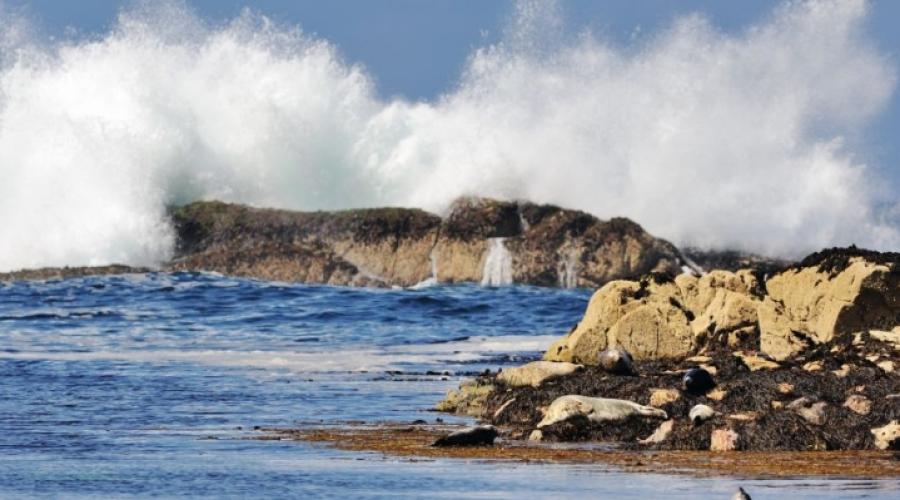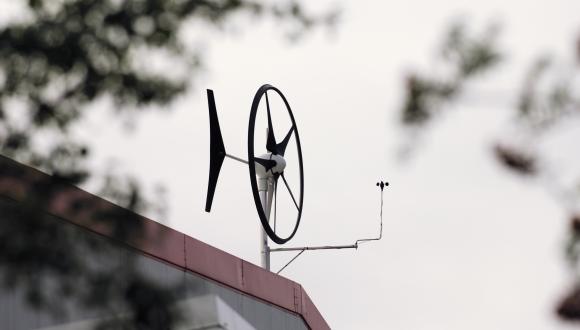
Wave and tidal energy
Scotland’s seas provide a vast – and largely untapped – wave and tidal energy resource.
Scotland is pioneering wave and tidal technologies, with more test and demonstration devices deployed here than in any other country. Numerous consents have been provided for devices in Orkney and elsewhere in northern and western Scotland. Over thirty wave and tidal energy devices have been tested at EMEC (the European Marine Energy Centre), in Orkney, alone.
Even so, our understanding of the potential impacts of these technologies on wildlife is limited. Until we know more, it’s prudent to site them away from locations of known importance for marine species.
Wave power developments encompass a diverse range of technologies and designs, and can be deployed near shore or offshore. Wave technologies may cause the displacement of some species, like seabirds, and localised damage to seabed habitats and species.
Four tidal arrays in Scotland have been consented to date, of which two, at Inner Sound in the Pentland Firth, and Blue Mull Sound in Shetland, are now operational. Tidal stream technologies are much less varied in nature and are typically deployed near the coast, where tidal currents are strongest – e.g. in narrow sounds and around headlands. They may affect marine mammals, fish and diving seabirds through collision and disturbance.
Tidal range technologies include tidal barrages and tidal lagoons. Naturally, these may be considered where tidal range is greatest, as in some firths and estuaries. There have not yet been any consents for this form of development in Scotland.
Our approach
We’re committed to supporting the development of wave and tidal stream renewables in Scotland, as part of the Scottish Government’s action on climate change.
The marine environment around Scotland contains a wide range of rare and important habitats and species, many with international protection. Because wave and tidal technologies are so new, there is little evidence on how these will interact with Scotland’s nature.
To help overcome these challenges, we endorse a phased development approach to wave and tidal energy, as set out in the Scottish Government’s Survey, Deploy and Monitor policy. This entails starting at a small scale in low-sensitivity locations, monitoring interactions and scaling up to full-scale commercial developments once the impacts are understood.
Information and guidance
We work closely with the Scottish Government, Crown Estate Scotland and industry to develop guidance and information for developers.
This focuses on:
- survey and monitoring of marine species and habitats before and after development
- collating data on species distribution and behaviour
- conducting collision risk modelling and other aspects of Environmental Impact Assessment and Habitats Regulations Appraisal
View our general marine renewables guidance.
View specific wave and tidal guidance and research:
- Assessing collision risk between underwater turbines and marine wildlife: NatureScot Guidance Note (2016) and Underwater collision risk spreadsheet
- Harbour seal haul-out monitoring, Sound of Islay: NatureScot Commissioned Report No. 894 (2015)
- Understanding the potential for marine megafauna entanglement risk from marine renewable energy developments: NatureScot Commissioned Report No. 791 (2014)
- Understanding the potential effects of wave energy devices on kelp biotopes: NatureScot Commissioned Report No. 783 (2014)
- Coastal character assessment: Orkney and North Caithness (2016)
- Review of underwater video data collected around operating tidal stream turbines: NatureScot Research Report No.1225 (2020)
Explore Scottish Government marine renewable energy research. Most relevant to the wave and tidal sectors is IMPACT, an online impact assessment tool.
In 2013, the Scottish Government consulted on draft marine plans for the offshore wind, wave and tidal energy sectors. Regional Locational Guidance informed the plans for each sector.






